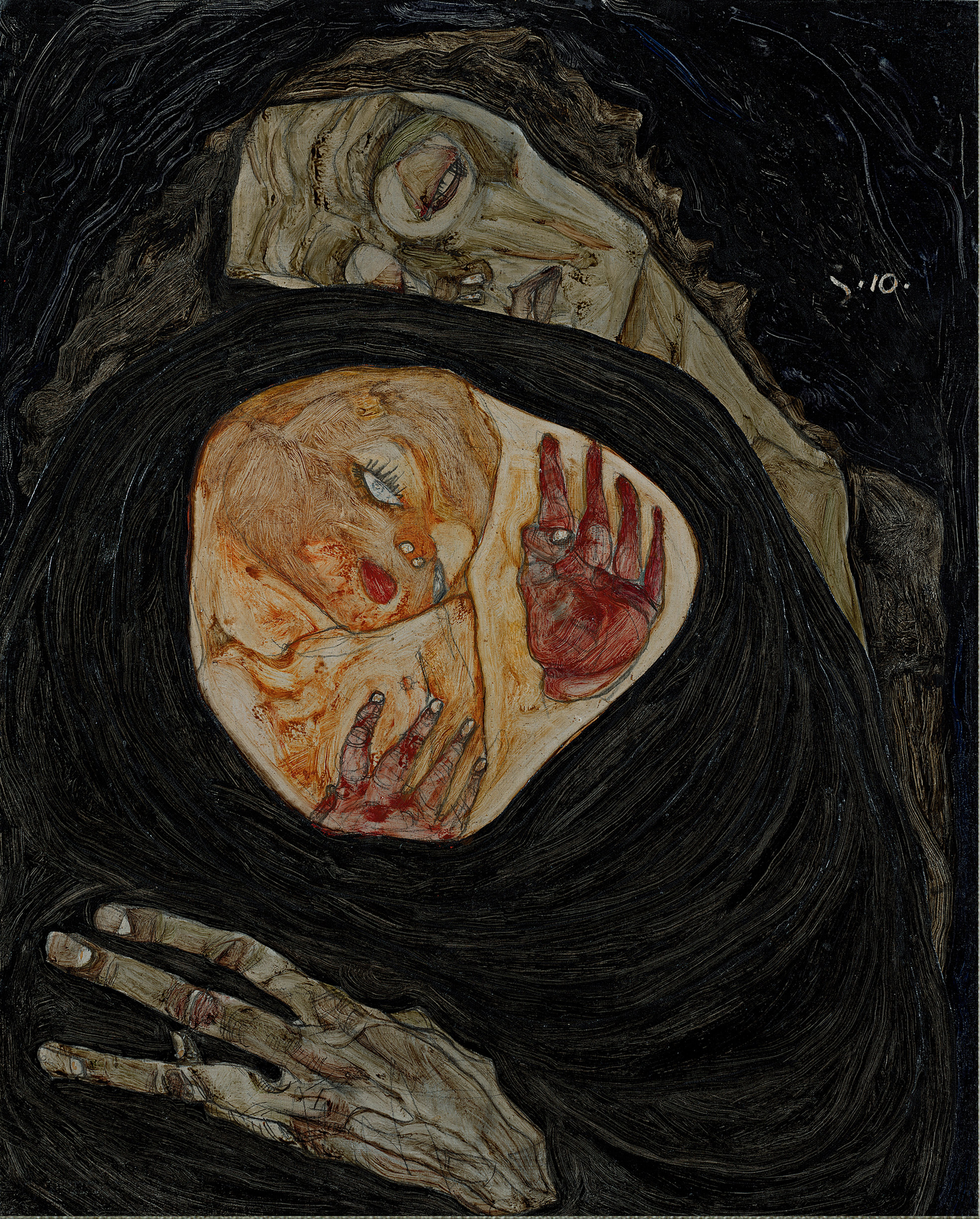Sunday morning came too soon for a young actress, as early December laid her around the children who would be kissed by their mother nevermore. Their father had abandoned them a year ago, and the newly orphaned three were about to be split up for adoption. It meant the beginning of a new life, with different families to all. For Edgar, the middle sibling, death would remain the central theme of his existence. Eliza Poe was accustomed to death, as she had died many times: as Juliet in Verona and Ophelia by the river; and probably inspired all the young and beautiful woman killed by the pen of her son Edgar — a melancholic pattern throughout his tales and poems. The Raven, his most famous poem, a symbol of sorrow and death but also of idealized beauty and cruel truth, didn't only come tapping on Edgar Allan Poe’s chamber door.
Egon Schiele, the author of today’s painting, also had a close encounter with this brutal and romantic form of death. Schiele's fate was similar to one of Poe’s unfortunate lover characters. Three days after marrying Edith, during World War I, he was compelled to serve in the army of Prague. Edith came and stayed in a hotel while he lived with the conscripts in an exhibition hall. While painting, he would soon catch the attention of his commander, who gave him a room to use as a studio. When the war ended the couple returned to Vienna, where he began to triumph as an artist. Edith was pregnant with his child and portrait commissions were increasing. But in the autumn of 1918, Edith succumbed to the Spanish Flu. Schiele spent three days after the death of his beloved painting her, then he also died. It is obvious that life is the essence of existence, but some conquer the nature of decay by defeating their own death with immortality.
This is the case with many artists, but allow me to present you an even stranger story: Henrietta Lacks died in Baltimore, the same city where Edgar Allan Poe died under mysterious circumstances. She also achieved immortality, even more literally than Poe or Schiele. But she was no painter nor poet—she was a tobacco farmer. Her DNA is the only culture to have ever created an immortal cell line, known as HeLa. Taken from a cancerous tumor, her cells were cultured and used for medical research. Due to their abnormal growth and reproductive rate, these cells continue this day to be used for research. HeLa cells helped create the polio vaccine, were the first human cells ever cloned, and even helped to map the human genome. I guess one only dies when the last piece of us has perished.
- Artur Deus Dionisio


 Egon Schiele
Egon Schiele